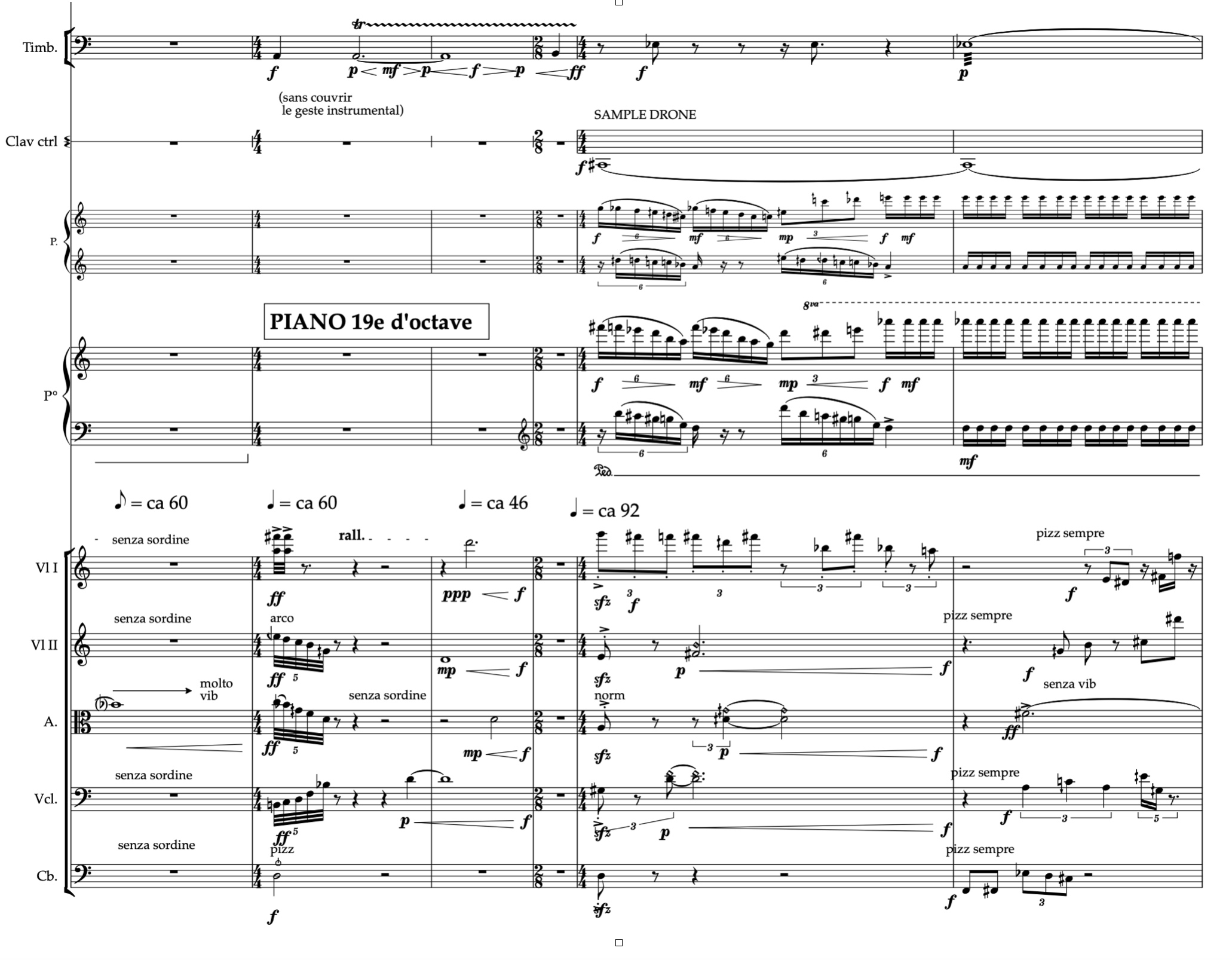Solo midi keyboards with
- Midi keyboard and computer device (Ableton)
- A second small keyboard (2 octaves + Pitch Bend, Modulation Wheel, Pads, 2 potentiometers, a slider) for the sampler and control device
Flute (also piccolo)
Oboe
Bb clarinet (also Bb bass clarinet)
Bassoon
French horn
Trumpet (in C)
Trombone
Tuba
Percussion 1 (2 Bongos, Glockenspiel Vibraphone)
Percussion 2 (4 Chinese blocks, Triangle, Cymbal, 2 Pedal Timpani, Tam-tam medium)
2 violins
Alto
Cello
Double bass

Partch’s Mirrors (2024 - 20 min)
For midi keyboard, electronics and 15 instruments
Did I conceive this piece as a journey through a space-time of distorting mirrors? Not a wander through a fairground attraction, but rather a subtle journey through a whimsical montage of concave and convex sound reflections, in permanent anamorphosis. The ensemble is introspective, voluble and colorful. The midi keyboard is a piano metamorphosed by microtonality, unless it takes on the role of an « electronic gamelan » between bell tones (inharmonic) and noisy sounds, or a brass band plunging into extreme abysses. « Traces-déviation » is an essential concept in this discourse which, starting from a common temperament, diffracts via the keyboard and electronics into the space of a 19th division of an octave before annihilating itself in a whirlwind of 14th of a tone (the near-complete range of the keyboard allowing only an octave to be played!).
This is where Harry Partch comes in, a twentieth-century American composer with a passion for hybrid, invented instruments and the most imaginative intonations. Before starting the piece, I listened again to some of his works and (re)read some of his articles.
As an extension of his theoretical thoughts, I based myself on certain properties stemming from his reflections on the 19th octave scale, also referring to history - it was already known in the Renaissance (cf. Vicentino's archicembalo tuned to this intonation). I also extended the experiment by imagining an original division of the keyboard, i.e. the space of a fifth played (7 keys) to cover a semitone heard, so 12 fifths to cover the space of an octave heard, hence this scale in 84ths of an octave. And an ear quiver for each key pressed. A way of returning to the “heart of sound”, the multiple vibration that Scelsi loved so much.
To return to the listening of the piece, each sequence reveals a singularity of sound in its temperament, material and articulation. Up to 2/3 of the work, the following succession is heard around the proposed keyboard/electronics core:
- Organic texture of brassy sounds/equal temperament
- frenzy of “electronic gamelan” sounds/spectral temperament based on inharmonic timbre components
- harmonic and melodic journey around a piano in the 19th octave
- swirling piano in the 84th octave.
Mirroring the original, the remaining third of the piece distorts and compresses these sequences in the opposite direction, returning to the original measures. Through this maelstrom of sound, the orchestral ensemble acts as an chamber echo, filtering, amplifying and agitating what's happening inside the keyboard and electronics. Without, however, forcing acoustic musicians to slip into temperaments impracticable for their instruments.
The work was co-commissioned by the Festival Art Musica and the Centre Henri Pousseur (electronic music studio of Liège - Belgium), in response to a proposal by the ensemble Sturm und Klang and its conductor Thomas Van Haeperen. First performed by the latter on November 23 (Brussels) and 27 (Louvain-La-Neuve) 2024, with Nao Momitani as soloist, as part of the Ars Musica Festival.
Claude Ledoux
